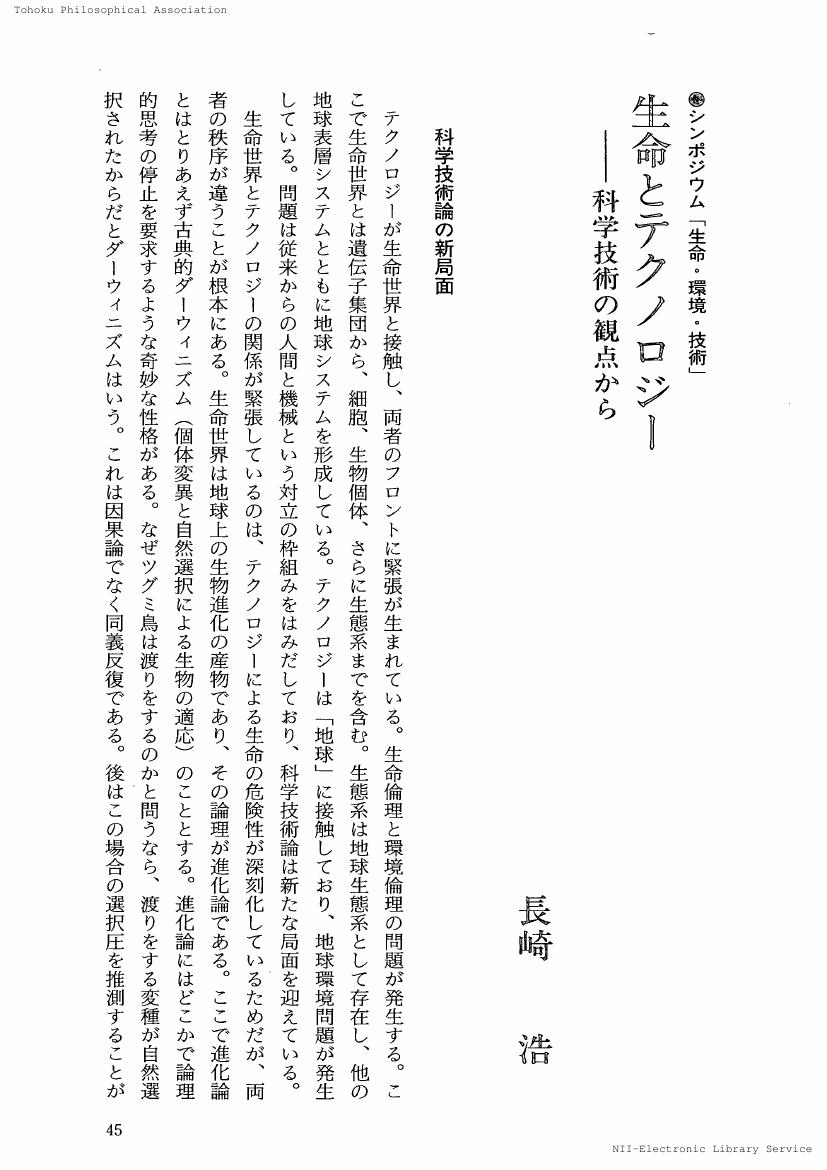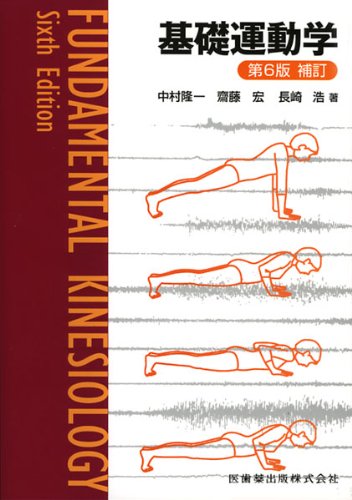- 著者
- 藤瀬 武彦 橋本 麻里 長崎 浩爾
- 出版者
- 新潟国際情報大学情報文化学部
- 雑誌
- 新潟国際情報大学情報文化学部紀要 (ISSN:1343490X)
- 巻号頁・発行日
- vol.7, pp.227-256, 2004-03-22
The purpose of this study was to obtain the characteristics of physique, physical fitness, and motor ability in students of Niigata University of International and Information Studies. A total of 1891 male (18.3±0.8 yr; 18-28 yr) and 944 female (18.2±0.5 yr; 18-24 yr) students in the ten- year period from 1994 to 2003 were measured the anthropometric dimensions, physical fitness, motor ability, and 1RM lifts in the squat, bench press, and dead lift. The ratio of arm span, head length, and crotch to standing height were 1.012±0.023, 0.137±0.008, and 0.457±0.013 in males, and 1.005±0.021, 0.138±0.008, and 0.454±0.013 in females, respectively. The BMI (body mass index) and WHR (waist hip ratio) of males and females were 21.4±3.2 kg/m^2 and 0.804±0.055 in males, and 20.9±2.5 kg/m^2 and 0.717±0.037 in female, the former fell in with normal values of Japanese males and females aged 18 years. However, the skinfolds of those students showed a significantly higher than normal value (p<0.001), and the percentages of body fat (calculated by using skinfolds) were higher, too. In the physical fitness test (side step, vertical jump, back strength, grip strength, trunk extension, standing trunk flexion) and the motor ability test (50m dash, long jump, standing long jump endurance run), mean values of males and females showed significantly lower in almost all the tests than normal values (p<0.001). The values of the squat, bench press, and dead lift were 83.1±17.2 kg, 51.5±10.8 kg, and 116.5±18.7 kg in males, and 43.2±9.7 kg, 23.8±4.3 kg, and 70.0±11.7 kg in females, respectively. These results suggest that male and female students in this university possessed higher relative body fat and were inferior in physical fitness and motor ability to normal Japanese young people.
2 0 0 0 OA 416. 正常歩行における歩行速度、歩行率、歩幅の相互関係
- 著者
- 関屋 曻 長崎 浩 伊東 元 古名 丈人
- 出版者
- 公益社団法人 日本理学療法士協会
- 雑誌
- 理学療法学Supplement Vol.21 Suppl. No.2(第29回日本理学療法士学会誌 第21巻学会特別号 No.2)
- 巻号頁・発行日
- pp.416, 1994-04-01 (Released:2017-07-24)
2 0 0 0 417. 高齢者の歩行速度、歩幅、歩行率、および歩行パターン
- 著者
- 古名 丈人 伊東 元 長崎 浩 橋詰 謙 丸山 仁司 衣笠 隆
- 出版者
- 公益社団法人 日本理学療法士協会
- 雑誌
- 理学療法学Supplement
- 巻号頁・発行日
- vol.1994, 1994
- 被引用文献数
- 1
1 0 0 0 OA 無酸素的運動時の高濃度酸素ガス吸入が作業成績に及ぼす効果
- 著者
- 藤瀬 武彦 重原 麻里 長崎 浩爾 高橋 努 岩垣 丞恒 山村 雅一
- 出版者
- 新潟国際情報大学情報文化学部
- 雑誌
- 新潟国際情報大学情報文化学部紀要 (ISSN:1343490X)
- 巻号頁・発行日
- vol.5, pp.265-282, 2002-03-19
- 著者
- 藤瀬 武彦 橋本 麻里 長崎 浩爾 高橋 努 岩垣 丞恒 山村 雅一
- 出版者
- 新潟国際情報大学情報文化学部
- 雑誌
- 新潟国際情報大学情報文化学部紀要 (ISSN:1343490X)
- 巻号頁・発行日
- vol.6, pp.143-158, 2003-03-20
The purpose of this study was to determine whether hyperoxic gas inhalation following anaerobic exercise hastens recovery or enhances subsequent performance. Eight male and four female university students performed two bouts of bench press exercise to exhaustion at 70% of 1RM (performance test: PT-1 and 2). Interval of two exercises was separated by a 30 min recovery period during which the subjects breathed either room air (NOX) or hyperoxic gas (60% O2 in nitrogen: HOX) for 20 min (1-21 min of recovery time). The entire procedure was repeated on each subject using the opposite gas on another day. The work load in PT was 41.3+10.9 kg (70.2% of 1RM). The numbers of repetition of bench press in NOX and HOX conditions were 15.0+4.7 and 14.5+4.4 repetitions in PT-1, and 13.7+4.1 and 13.0+4.0 repetitions in PT-2 (NOX, -8.7%: HOX, -10.3%), there were no significant differences between both conditions, respectively. The changes of blood lactate concentration and its peak values (NOX, 4.00+1.08 mM: HOX, 3.90+0.88 mM) during recovery periods were not significantly different between NOX and HOX conditions. In conclusion, these data indicate that hyperoxic gas inhalation offers no advantages on recovery from exhaustive anaerobic exercise or on subsequent exercise performance.
1 0 0 0 OA 試合形式の異なる空手道競技者における筋力発揮及び有酸素的作業能力の比較
- 著者
- 藤瀬 武彦 杉山 文宏 松永 尚久 豊嶋 建広 長崎 浩爾
- 出版者
- 新潟国際情報大学情報文化学部
- 雑誌
- 新潟国際情報大学情報文化学部紀要 (ISSN:1343490X)
- 巻号頁・発行日
- vol.1, pp.203-215, 1998-03-20
The purpose of this study was to compare the strength performance and aerobic capacity between male non-contact karatedo athletes (N-karate) and male full-contact karatedo athletes (F-karate). There were two groups consisting of seven N-karate (weight : 65 ±3 kg) and seven F-karate (80±6 kg). The control group consisted of eighteen male university students (N-control) weighing 65±3 kg and eighteen male students (F-control) weighing 80±3 kg. All were measured for anthropometric characteristics and all performed physical fitness tests and aerobic capacity test by treadmill running until exhaustion. The body weight, percentage of fat, LBM, and the girth of chest, waist, hip, arm, and thigh on F-karate were significantly larger than those of N-karate. The girth of thigh of N-karate and F-karate were thicker (p<0.05) than those of N-control and F-control, respectively. There were significant differences between F-control and F-karate, and for N-karate and F-karate in the activities of strength performances of grip and back strength, of IRM of the squat, bench press, and dead lift by using barbell. This was not so for N-control and N-karate. However, N-karate showed no difference from F-karate on IRM per kg of body weight with regard to the squat and dead lift. The dead lift in N-karate (2.14±0.13kg/wt) trended to show the higher value than that in F-karate (2.00±0.21kg/wt). For the aerobic capacity, the, endurance times of the control, N-karate, and F-karate were 708±61sec, 899±164sec, and 937±110sec respectively, and there were significant differences between control subjects and karatedo athletes. The VO_2max of N-karate (51.7±3.9ml/kg/min) was the same as the one of F-karate (51.3±3.9 ml/kg/min). These values of karatedo athletes were higher than the one of control (48.0±4.2 ml/kg/min), but not significant statistically. These results suggest that karatedo athletes acquired higher strength performance and aerobic capacity through daily karatedo exercise and that the anthropometric and physical fitness characteristics of full-contact karatedo athletes might be attributed to the amount of weight training.
1 0 0 0 OA 生命とテクノロジー : 科学技術の観点から(シンポジウム「生命・環境・技術」)
- 著者
- 長崎 浩
- 出版者
- 東北哲学会
- 雑誌
- 東北哲学会年報 (ISSN:09139354)
- 巻号頁・発行日
- vol.18, pp.45-51, 2002-04-30 (Released:2018-02-28)
- 著者
- 藤瀬 武彦 橋本 麻里 長崎 浩爾
- 出版者
- 新潟国際情報大学経営情報学部
- 雑誌
- 新潟国際情報大学経営情報学部紀要 (ISSN:24342939)
- 巻号頁・発行日
- vol.1, pp.1-18, 2018-04-01
本研究では女子学生の理想体型を明らかにするために、形態数値の明らかな12名の女子学生モデル(BMIが15.5~25.8 kg/m2)の中から理想体型を選択させ、被験者の実測体型との関連についても検討した。被験者は女子学生322名(年齢19.8±1.9歳、身長159.5±5.6cm、体重52.9±7.9㎏、BMI20.8±2.8 kg/m2)であった。アンケートにより理想とする形態数値(数値理想体型)などを回答してもらうとともに、理想体型モデルを選択させてその形態数値を用いて分析した。現状よりも「痩せたい」と回答した女子学生は85.7%(276名)であり、主な痩せたい理由については「スタイルを良くしたい」(37.7%),「太いから」(34.8%),「着たい服があるから」(12.7%)などであった。数値理想体型は、身長161.1±4.6cm、体重48.2±4.6㎏、BMI18.6±1.4kg/m2、バスト85.4±5.5m、ウエスト60.0±4.3cm、ヒップ83.4±5.8cmであり、これらは実測体型それぞれの数値と有意な相関関係が数多く認められた。一方、理想体型モデルの数値は、脚長72.3±2.4cm(理想身長比46.1%)、指極159.1±3.7cm(101.6%)、体重43.8±5.7㎏、BMI17.8±1.9 kg/m2、バスト79.5±3.8cm(50.8%)、ウエスト60.7±2.9cm(38.8%)、ヒップ83.5±3.8cm(53.3%)などであり、これらの数値は実測体型それぞれの数値との間にほとんど有意な相関関係は認められなかった。数値理想体型とともに 理想体型モデルの数値を用いて理想とする体型の数値を求めると、身長161.1㎝、体重46.2㎏、BMI17.8kg/m2、バスト85.4㎝、ウエスト62.5㎝、ヒップ85.9㎝であり、またこれらの他には脚長74.3㎝、指極163.7㎝、上腕囲23.2㎝、前腕囲21.7㎝、大腿囲50.9㎝、下腿囲32.2㎝、足首囲21.7cmなどであった。以上の結果から、形態数値の明らかな理想体型モデルの選択によって日本人若年女性の理想体型のより客観的数値が求められ、この数値は女子学生自身の体型数値とはほぼ無関係であることなどが明らかとなった。
1 0 0 0 OA 青年男女における隠れ肥満者の頻度と形態的及び体力的特徴
- 著者
- 藤瀬 武彦 長崎 浩爾
- 出版者
- The Japanese Society of Physical Fitness and Sports Medicine
- 雑誌
- 体力科学 (ISSN:0039906X)
- 巻号頁・発行日
- vol.48, no.5, pp.631-640, 1999-10-01 (Released:2010-09-30)
- 参考文献数
- 37
- 被引用文献数
- 4 6
本研究では, 男子学生1278名及び女子学生707名を対象に形態及び体力測定を行い, 青年男女における隠れ肥満者の頻度を明確にするとともに形態的及び体力的特徴について検討した.1) 男性及び女性における隠れ肥満者の頻度はそれぞれ5.4%及び13.6%, また肥満者における隠れ肥満者の頻度は30.4%および66.2%であった.女性は男性の約2.5倍の隠れ肥満者が存在し, 肥満者における隠れ肥満者の頻度も女性の方が約2.2倍多かった.2) 男性の形態は, 対照群と隠れ肥満群の間に一定の傾向が認められなかった.しかし, 女性ではBMIが21以上23未満の隠れ肥満群で胴囲及びWHRが対照群より有意に高値を示した.3) 男性の体力は, BMI20群の背筋力及び握力, BMI22群の垂直跳び, BMI23群の背筋力, 及び立位体前屈で隠れ肥満群が対照群よりも有意に低値を示したが, 女性ではBMI22群の反復横跳び以外に有意差が認められなかった.4) 男性の運動能力は, BMI20群の50m走, 走幅跳び, 及び立ち幅跳び, BMI21群の50m走と走幅跳び, BMI22群の走幅跳び, BMI23群の50m走と立幅跳びで隠れ肥満群が対照群よりも有意に低値を示したが, 女性ではBMI22群の走幅跳び及びBMI23群の50m走以外に有意差が認められなかった.
1 0 0 0 基礎運動学
- 著者
- 中村隆一 齋藤宏 長崎浩著
- 出版者
- 医歯薬出版
- 巻号頁・発行日
- 2003
1 0 0 0 皇民奉公会:楽しい奉公班
1 0 0 0 416. 正常歩行における歩行速度、歩行率、歩幅の相互関係
- 著者
- 関屋 曻 長崎 浩 伊東 元 古名 丈人
- 出版者
- 公益社団法人日本理学療法士協会
- 雑誌
- 理学療法学Supplement (ISSN:02893770)
- 巻号頁・発行日
- vol.1994, 1994
1 0 0 0 OA 男性(18〜83歳)を対象にした運動能力の加齢変化の研究
- 著者
- 衣笠 隆 長崎 浩 伊東 元 橋詰 謙 古名 丈人 丸山 仁司
- 出版者
- 日本体力医学会
- 雑誌
- 体力科學 (ISSN:0039906X)
- 巻号頁・発行日
- vol.43, no.5, pp.343-351, 1994-10-01
- 被引用文献数
- 60 30
高齢者用の運動能力テストバッテリーを確立するために, Fleishmanの運動能力のモデルに準拠し, 高齢者でも安全に行えるテストを選び, 若年者から高齢者までを対象として, 運動能力の加齢変化を調べた.<BR>被験者は男性150名 (年齢: 18歳から83歳) であった.運動機能は8項目を測定した. (1) 握力と等尺性膝伸展力. (2) ステップテスト. (3) 開眼時と閉眼時の重心動揺距離と重心動揺面積. (4) 立位体前屈. (5) 指タッピング (最大タッピングと2Hz, 3Hz, 4Hz, 5Hzの音に合わせるタッピング) . (6) ペグボードテスト. (7) 視覚単純反応時間. (8) 通常の速さの歩行 (自由歩行) とできるだけ速い歩行 (最大歩行) .自由歩行の速度と5Hzの指タッピングの変動係数を除いて, すべての運動機能に加齢に伴う低下がみられた.20歳を100%とした時の, 80歳の主な運動能力の低下は, 仮定した運動能力ごとに以下のような特徴がみられた.手指巧緻性や反応時間は30%以内の低下, 筋力, 持久性および歩行に関する運動能力は40~60%の低下, 柔軟性や平衡性は70%以上の低下であった.以上の結果より, 運動能力の加齢変化の総合的な評価ができ, かつ安全性の面からも適切な運動能力テストバッテリーとして, 体前屈, 握力, 膝伸展力, 最大速度歩行, 閉眼重力動揺距離, ステップテスト, 指タッピングが上げられる.
1 0 0 0 高齢者歩行の決定要因
- 著者
- 西澤 哲 古名 丈人 杉浦 美穂 奥住 秀之 長崎 浩 伊東 元 藤田 祐樹 荻上 真理 上田 裕
- 出版者
- バイオメカニズム学会
- 雑誌
- バイオメカニズム
- 巻号頁・発行日
- vol.15, pp.131-140, 2000
- 被引用文献数
- 6 4
Introduction: The gait of older adults is characterized by such gait parameters as slow walking velocity and small range of change in joint angle. The effect of aging on these parameters has been analyzed independently, but the strength of the aging effect on each parameter has not been determined in detail. In the present study, using principal component analysis and analysis of variance, we clarified the strength of the aging effect on gait parameters. Method: The participants were 616 older adults (65 to 91 years old) living in Nangai Village located in northern Japan and 45 young adults (20 to 39 years old). The participants were classified by gender and into five age groups (aged 20 to 39 years, 65 to 69 years, 70 to 74 years, 75 to 79 years, and 80 years or above). They walked on an 11-meter straight walkway at their preferred speeds. The coordinates of markers attached to participants' iliac spines, knees, ankles, toes, and heels were measured using a Vicon-370 system (Oxford Metrics, Oxford, England) during 5 meters near the middle of the walkway. The sampling frequency was 60 Hz. From this three-dimensional data, we calculated 34 representative gait parameters. For these parameters, through principal component analysis and two-way analysis of variance by gender and age groups, we determined aging-related principal components and parameters belonging to each component. Results and Discussion: Through principal component analysis, we detected ten components with over one point of eigen value. After two-way analysis of variance for component score, we classified components according to whether they were age-related or not. The age-related components were the first principal component, with 26.0% of contribution rate. In the first component, stride length, toe height on heel contact, peak extension angle around the hip joint, and magnitude of vertical sway had a high component score; we labeled this component the "stride length" component. The parameters of cadence, single stance time, and magnitude of lateral sway had a high score in the second component (11.0% of contribution rate), which we labeled the "stride duration" component. In the second component, we detected significant gender difference. Components with less than 5% explanation of variance were mainly related to parameters on relative time in one walking cycle, such as timing of maximum knee extension. These results suggest that parameters related to stride length may strongly characterize the gait of older adults. In other words, the gait of older adults may be recognized mainly from their short stride length. The low explanation of variance for timing parameters may suggest that the pattern of kinematic change in one gait cycle is determined strictly, whereas kinematic magnitude is strongly affected by aging.
1 0 0 0 OA 健常老年者における最大歩行速度低下の決定因 : 重心動揺と歩行率の関連
- 著者
- 伊東 元 長崎 浩 丸山 仁司 橋詰 謙 中村 隆一
- 出版者
- 公益社団法人日本理学療法士協会
- 雑誌
- 理学療法学 (ISSN:02893770)
- 巻号頁・発行日
- vol.17, no.2, pp.123-125, 1990-03-10
- 被引用文献数
- 17
健常老年男性15名 (64-84歳) に最大速度で歩行を行わせ, 速度・歩幅・歩行率と重心動揺距離との関係を検討した。歩行速度の有意な決定因は重心動揺距離であり, 重心動揺距離が小さいと速度が速かった。歩行率の決定因は重心動揺距離であり, 重心動揺距離が大きいと歩行率が小さかった。歩幅に対しては有意な決定因はなかった。




